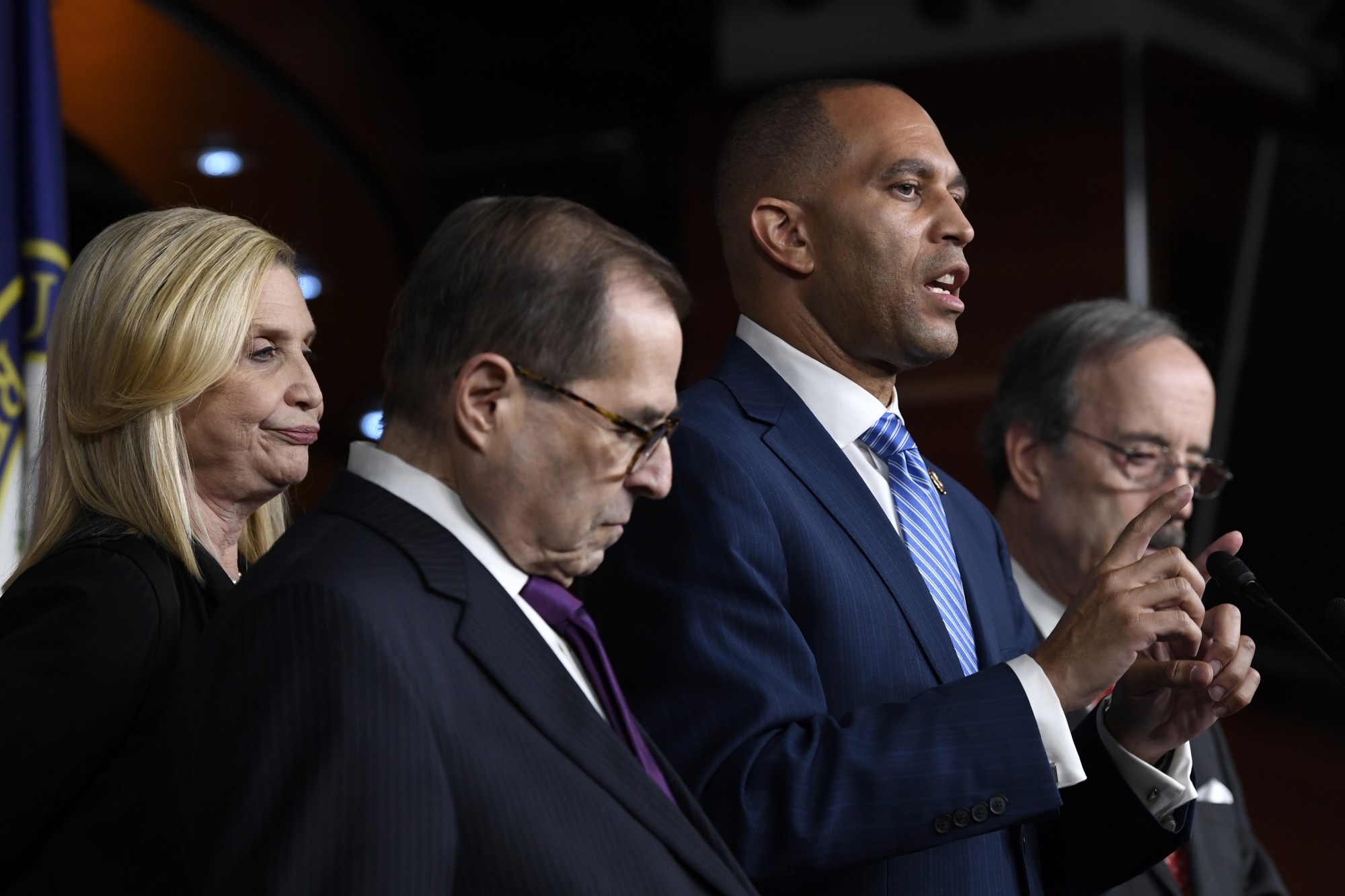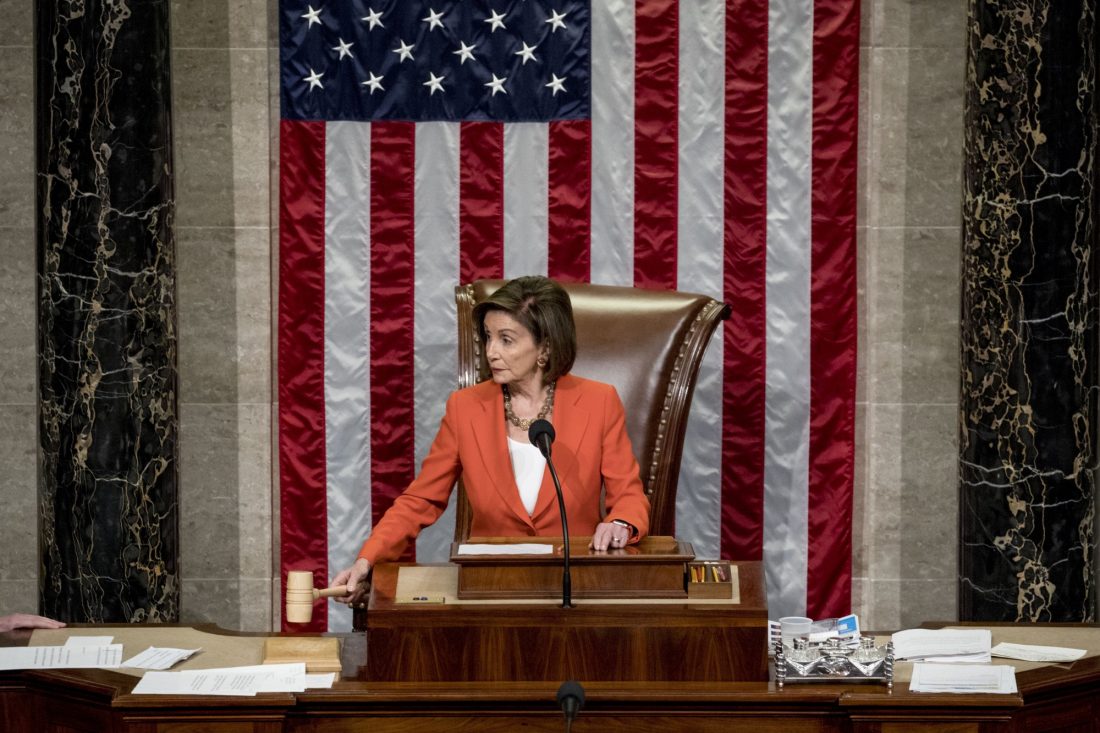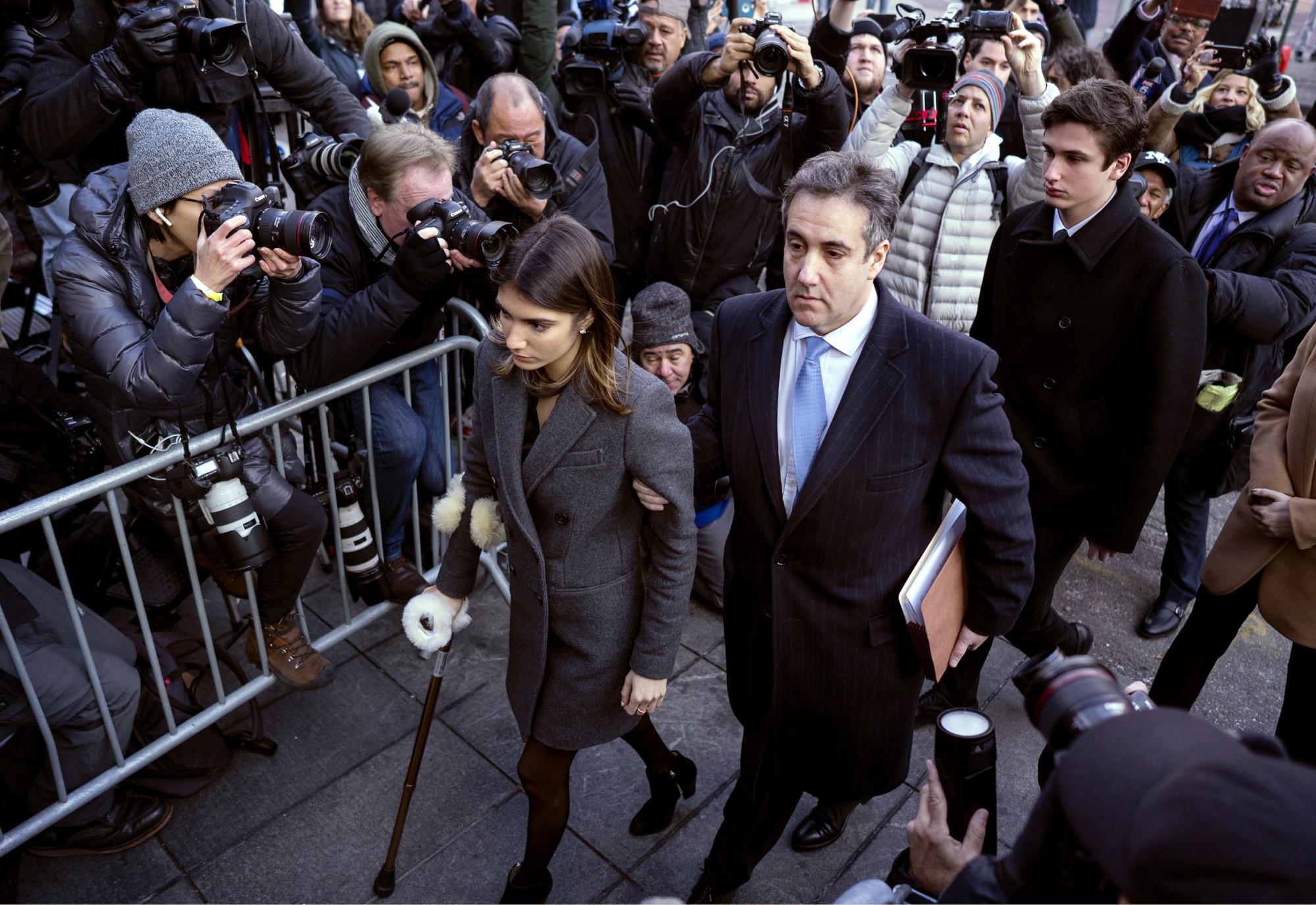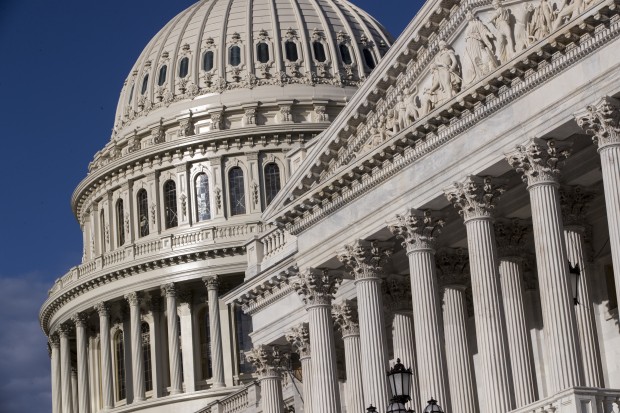
WASHINGTON (AP) — Democrats pushed a package of ground rules for their impeachment inquiry of President Donald Trump through a sharply divided House Thursday, the chamber’s first formal vote in a fight that could stretch into the 2020 election year.
The tally was 232-196, with all Republicans who voted opposing the resolution. Just two Democratic defectors joined them: freshman Rep. Jeff Van Drew of New Jersey and 15-term veteran Rep. Collin Peterson of Minnesota, one of his party’s most conservative members. Both represent GOP-leaning districts.
Though the vote was technically over the rules that will govern the process, each side used it to accuse the other of having already decided whether Congress should wrench Trump from office.
It also underscored how — for now — lawmakers on each side are comfortable with their approaches to next year’s presidential and congressional elections. Democrats have been buoyed by polls showing growing public sentiment toward investigating and even removing Trump from office, while the same surveys have shown GOP voters standing fast by him.
Thursday’s measure defined the procedures lawmakers will follow as they transition from weeks of closed-door interviews with witnesses to public hearings and ultimately to possible votes on whether to recommend Trump’s impeachment.
The vote, which occurred on Halloween, drew a familiar Twitter retort from Trump: “The greatest Witch Hunt in American History!”

And White House press secretary Stephanie Grisham accused House Speaker Nancy Pelosi and the Democrats of an “unhinged obsession with this illegitimate impeachment proceeding.”
During the debate, Democrats spoke of lawmakers’ duty to defend the Constitution, while Republicans cast the process as a skewed attempt to railroad a president whom Democrats have detested since before he took office.
“What is at stake in all this is nothing less than our democracy,” said Pelosi, D-Calif. Underscoring her point, she addressed the House with a poster of the American flag beside her and began her remarks by reading the opening lines of the preamble to the Constitution.
She also said the procedures would let lawmakers decide whether to impeach Trump “based on the truth. I don’t know why the Republicans are afraid of the truth.”
House Minority Leader Kevin McCarthy, R-Calif., contended the Democrats are trying to remove Trump simply “because they are scared they cannot defeat him at the ballot box.”
No. 3 House GOP leader Steve Scalise, R-La., accused them of imposing “Soviet-style rules,” speaking in front of a bright red poster depicting St. Basil’s Cathedral on Red Square in Moscow.
Independent Rep. Justin Amash of Michigan, who left the Republican Party earlier this year after saying he was open to considering whether Trump should be impeached, also backed the measure.
The investigation is focused on Trump’s efforts to push Ukraine to investigate his Democratic political opponents by withholding military aid and an Oval Office meeting craved by the country’s new president.
Democrats said the procedures — which give them the ability to curb the president’s lawyers from calling witnesses — are similar to rules used during the impeachment proceedings of Presidents Richard Nixon and Bill Clinton. Republicans complained they were skewed against Trump.
It is likely to take weeks or more before the House decides whether to vote on actually impeaching Trump. If the House does vote for impeachment, the Senate would hold a trial to decide whether to remove the president from office.
Both parties’ leaders were rounding up votes as Thursday’s roll call approached, with each side eager to come as close to unanimity as possible.
Republicans said a solid GOP “no” vote would signal to the Senate that the Democratic push is a partisan crusade against a president they have never liked.
Democrats were also hoping to demonstrate solidarity from their most liberal elements to their most moderate members. They argued that GOP cohesion against the measure would show that Republicans are blindly defending Trump, whatever facts emerge.
Republicans said they’d use the vote to target freshman Democrats and those from districts Trump carried in 2016. They said they would contrast those Democrats’ support for the rules with campaign promises to focus on issues voters want to address, not on impeaching Trump.
Pelosi decided to have the vote following weeks of GOP claims that the inquiry was invalid because the chamber had not voted to formally commence the work.
The rules direct House committees “to continue their ongoing investigations” of Trump.
Democrats hope Thursday’s vote will undercut GOP assertions that the process has been invalid because the chamber hadn’t formally voted to start the proceedings. They note there is no constitutional provision or House rule requiring such a vote.
The rules lay out how the House Intelligence Committee — now leading the investigation by deposing diplomats and other officials behind closed doors — would transition to public hearings.
That panel would issue a report and release transcripts of the closed-door interviews it has been conducting.
The Judiciary Committee would then decide whether to recommend that the House impeach Trump.
Republicans could only issue subpoenas for witnesses to appear if the committees holding the hearings approve them — in effect giving Democrats veto power.
Attorneys for Trump could participate in the Judiciary Committee proceedings. But in a bid for leverage, panel Chairman Jerrold Nadler, D-N.Y., would be allowed to deny “specific requests” by Trump representatives if the White House continued refusing to provide documents or witnesses sought by Democratic investigators.








